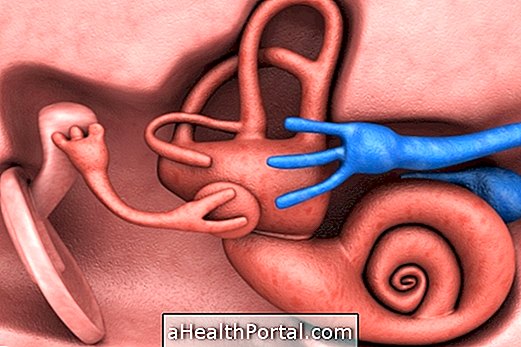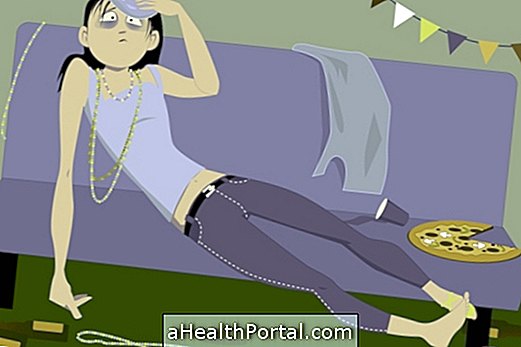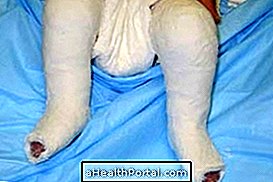This technique for bathing in a bedridden person, with stroke sequelae, multiple sclerosis or after complex surgery, for example, helps to decrease the effort and work done by the caregiver, as well as to increase patient comfort.
The bath should be given at least every 2 days, but the ideal is to keep the bath as often as the patient bathed before bed.

10 steps to bathe in bed
To bathe the bed at home, without using a waterproof mattress, it is possible to put a large plastic bag open under the bed sheet so as not to wet the mattress. Then follow these steps:
- Carefully drag the patient closer to you, remove the pillow and hold a sheet over the patient to avoid colds and flu;
- Begin the bath by washing the patient's eyes with a wet gauze or a clean cloth moistened, without soap, starting from the inner corner of the eye outward;
- Wash your face and ears with a damp sponge, preventing water from going into your eyes or between your ears, and then wipe your face with a soft towel;
- Place the liquid soap in the water, unclog the patient's arms and belly, and, using the soapy wick, wash the arms, starting with the hands toward the armpits, and then continue to wash the chest and belly;
- Dry the patient with the towel and then lay the sheet on top, leaving the legs uncovered this time;
- Wash the legs with the sponge soaked with soap and water, from the feet to the thighs and dry well with the towel, taking special care to dry between the toes to avoid having mycosis;
- Wash the patient's intimate region, starting from the front and passing back. To wash the intimate region behind, a tip is to turn the patient aside, taking advantage to fold the wet sheet of the patient's back and put a dry;
- Dry the patient's intimate area thoroughly and, with the patient lying on one side, wash the back with the other sponge moistened and cleaned so as not to contaminate the back with leftover urine;
- To finish the bath, lay the patient on the dry sheet and remove the rest of the wet sheet, stretching the rest of the dry sheet over the entire bed;
- Remove the sheet lying on top of the patient and wear it.
If you have used a plastic underneath the bed sheet to avoid wetting the mattress, remove it at the same time and in the same way that you remove the wet sheet from the bath water.
Besides bathing, brushing your teeth is also important, see the care you should take in the video:

On the day you bathe the patient, to save time and work, enjoy washing your hair. See this simple technique in: How to wash a bedridden person's hair.
Material needed to bathe in bed
Material that must be separated before bathing includes:
- 1 Medium basin with warm water (approximately 3 L of water);
- 2 clean gazes for the eyes;
- 2 soft sponges, one is used only for the genital and anus;
- 1 large bath towel;
- 1 tablespoon of liquid soap, approximately, suitable for the skin of the patient to dilute in water;
- Clean and dry sheets;
- Clean clothes to wear after bathing.
An interesting alternative to bath time is to use a special bath bed, such as the Confort Care hygienic stretcher, for example, which can be purchased at a medical-hospital equipment store for an average price of 15 thousand reais.
Care after bathing in bed
In the case of patients who have dressings, it is important to avoid wetting the dressing so as not to infect the wound, but if this happens, the dressing should be re-made.
After bathing the patient, it is important to put moisturizing cream on the body and put deodorants in the armpits to prevent bad smell, increase patient comfort and avoid skin problems, such as dry skin, bedsores or fungal infections, for example.
See other important care you should have with a bedridden person:
- How to become a bedridden person
- How to change the bed sheets of a bedridden person







-o-que--sintomas-e-tratamento.jpg)














